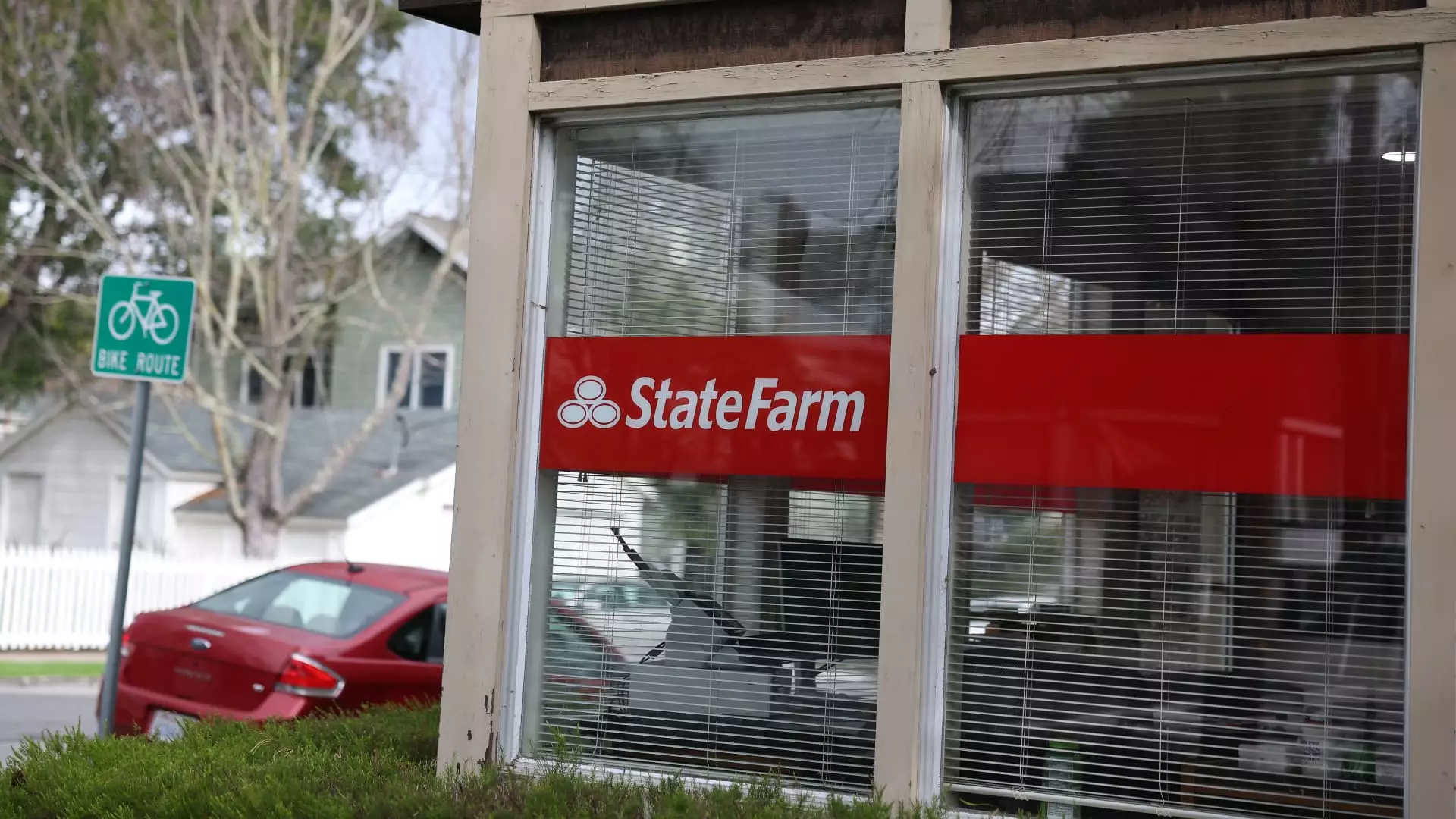State Farm, California’s largest property insurer, finds itself at a daunting crossroads as it pushes for a substantial rate increase that could reshape the insurance landscape in a state already reeling from unprecedented natural disasters. The stakes are alarmingly high; should the proposed hikes go through, they might not just bolster the company’s shaky finances, but they also risk pushing millions of vulnerable Californians into economic peril. The recent hearings in Oakland—a tense showdown following devastating wildfires in Los Angeles—paint a picture that is far from optimistic. Here, a deep dive reveals the complexities and implications surrounding State Farm’s rate hike application: a proposed 17% increase for homeowners and a staggering 38% for rental coverage.
In a post-fire California, the financial reality is harsh. The wildfires of January not only devastated properties—costing an estimated $250 to $275 billion—but also unleashed broader economic ramifications that could hinder recovery efforts for years to come. As an attorney with the California Department of Insurance metaphorically likened the situation to the Titanic facing an imminent iceberg, the reality for millions of Californians is sobering. More crucially, there is an undeniable need for a solution that balances corporate viability with the protection of consumers who are facing an untenable situation.
State Farm’s Survival: Tragedy and Transformation
With nearly three million policies under its belt, State Farm’s decision to request emergency rate increases may seem like a necessary evil. Despite the grim statistics—over $2.75 billion in payouts for wildfire-related claims—many wonder if this impending financial lifeline for the insurer is ultimately sustainable or just a temporary fix for a sinking ship. Let’s be clear: private entities must ensure solvency, especially when natural disasters escalate unpredictably. However, this proposal, which sees a reduction from an initial 22% rate increase, invites skepticism. Does State Farm have the credibility to demand further financial commitments from its clientele when its underwriting margins have been consistently in the red over the past five years?
A sound insurance market is predicated on trust and predictability. State Farm’s alarming abandonment of new homeowner policies not just disenfranchises future clients; it raises ethical questions about who will shoulder the financial burden caused by climate change. After all, as the reinsurance costs rise alongside natural disaster frequencies, consumers will ultimately pay the price. Those who remain on State Farm’s policies now find themselves cornered, potentially facing a choice between crippling premiums or finding new insurance providers that may not exist in an increasingly hostile market. The message here is clear: the time is ripe for more accountable practices that prioritize the consumer alongside corporate concerns.
A Broken System: Is Rate Increase Justice?
While the California Department of Insurance has signaled its support for State Farm’s requests, the push from advocacy organizations like Consumer Watchdog offers an essential check against unbridled corporate demands. Lead attorney William Pletcher aptly points out the inconsistency of the proposed raises; this already adds to the public’s distrust. A mere reduction in the requested hike fails to address the core issues at play—the systematic failures that led us here. The anemic response to catastrophic risks by legislators raises valid concerns about whether the framework in place is adequate to bring genuine stability.
It’s essential for lawmakers to engage actively in reforming a shambolic insurance landscape that has proven hostile to insurers and consumers alike. The adoption of a “Sustainable Insurance Strategy,” designed to streamline rates through catastrophe modeling, could represent a step toward preventing future crises—if it is implemented effectively and thoroughly. Yet, putting faith in administrative reforms alone without a steady dialogue between providers and consumers seems like a gamble at best. The approach to an evolving insurance climate must evolve from mere policy tinkering into robust, transparent practices.
The Price of Fear: Historical Lessons for Today
The real question isn’t just whether State Farm can or should raise rates; it’s about the long-term impact on California’s residents, especially low- to middle-income households who can least afford increased financial strain. The insurance crisis that emerged following the L.A. wildfires is not an isolated incident but a cautionary callback to history where overreactions to crises led to market instability, exacerbating existing inequities.
California, as a trendsetter in climate resilience, must embrace innovative mechanisms in risk assessment that move beyond reactive measures. Competitive activity among insurers can play a critical role in driving rates down while improving coverage options. But for that to become the norm, the state has to be willing to face these growing concerns, adopt widespread reforms, and ensure that responsible, ethical behavior is at the forefront. Only then can California transition from a reactive approach to a preventive stance—fostering a healthier relationship between its insurers and the citizens they claim to serve.

